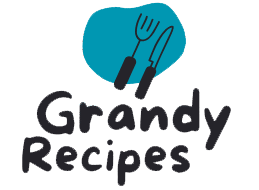Cottage cheese bread recipe might sound unusual at first, but once you try it, you’ll wonder why it took you so long to bake it. Imagine the soft, fluffy texture of fresh bread combined with the creamy richness of cottage cheese—every bite is hearty, moist, and surprisingly light. This isn’t just any loaf; it’s a protein-packed twist on traditional bread that works perfectly for breakfast, lunch, or even as a snack. Unlike ordinary bread, this recipe gives you extra nutrition while keeping the comfort of homemade baking. With simple ingredients like flour, yeast, eggs, and, of course, cottage cheese, you can create a loaf that’s both wholesome and satisfying. Whether you’re new to baking or looking for a healthier twist on bread recipes, this cottage cheese bread recipe is your ticket to something delicious. Don’t miss our gouda mac and cheese recipe

Cottage Cheese Bread Recipe
- Total Time: 1 hr 10 mins
Description
An easy high-protein bread recipe made with cottage cheese, eggs, ground flaxseed, oats, and olive oil.
Ingredients
- 2⅓ cups old-fashioned rolled oats
- 2 cups cottage cheese, strained
- 1 tablespoon ground flax seed
- 5 medium eggs, or 4 large eggs
- 2 tablespoons olive oil
- 1 tablespoon baking powder
- 3/4 teaspoon fine kosher salt
Instructions
- Preheat the oven to 350°F and line a 9 x 5-inch bread pan.
- In your food processor add the 2⅓ cups old-fashioned rolled oats and process until mostly fine.
- Add the 2 cups cottage cheese (strained), 1 tablespoon ground flax seed, 5 medium eggs, 2 tablespoons olive oil, 1 tablespoon baking powder, and 3/4 teaspoon fine kosher salt. Process until the mixture is smooth.
- Pour the mixture into your prepared loaf pan and bake for around 60 minutes, or until a toothpick inserted in the center of the loaf comes out clean.
- Allow the bread to completely cool on a cooling rack before slicing.
Notes
- You can use any oil of your choice.
- Lite cottage cheese works, but I used full-fat.
- Allow the bread to cool completely before slicing.
- Prep Time: 10 mins
- Cook Time: 1 hr
- Method: Baking
- Cuisine: American
Nutrition
- Serving Size: 12 servings
- Calories: 137 kcal
- Sugar: 1 g
- Sodium: 419 mg
- Fat: 5 g
- Saturated Fat: 1 g
- Trans Fat: 0.01 g
- Carbohydrates: 14 g
- Fiber: 2 g
- Protein: 8 g
- Cholesterol: 71 mg
Table of Contents
Introduction to Cottage Cheese Bread
What Makes a Cottage Cheese Bread Recipe Special?
The beauty of a cottage cheese bread recipe lies in its unique balance of taste, texture, and nutrition. While traditional breads rely solely on flour, yeast, and water, this version introduces cottage cheese to the mix. The result? A loaf that is softer, creamier, and far more nourishing than regular bread. Cottage cheese adds a mild tang that complements both sweet and savory toppings, making it versatile for any meal. Plus, the higher protein content gives you longer-lasting energy and helps make every slice more satisfying.
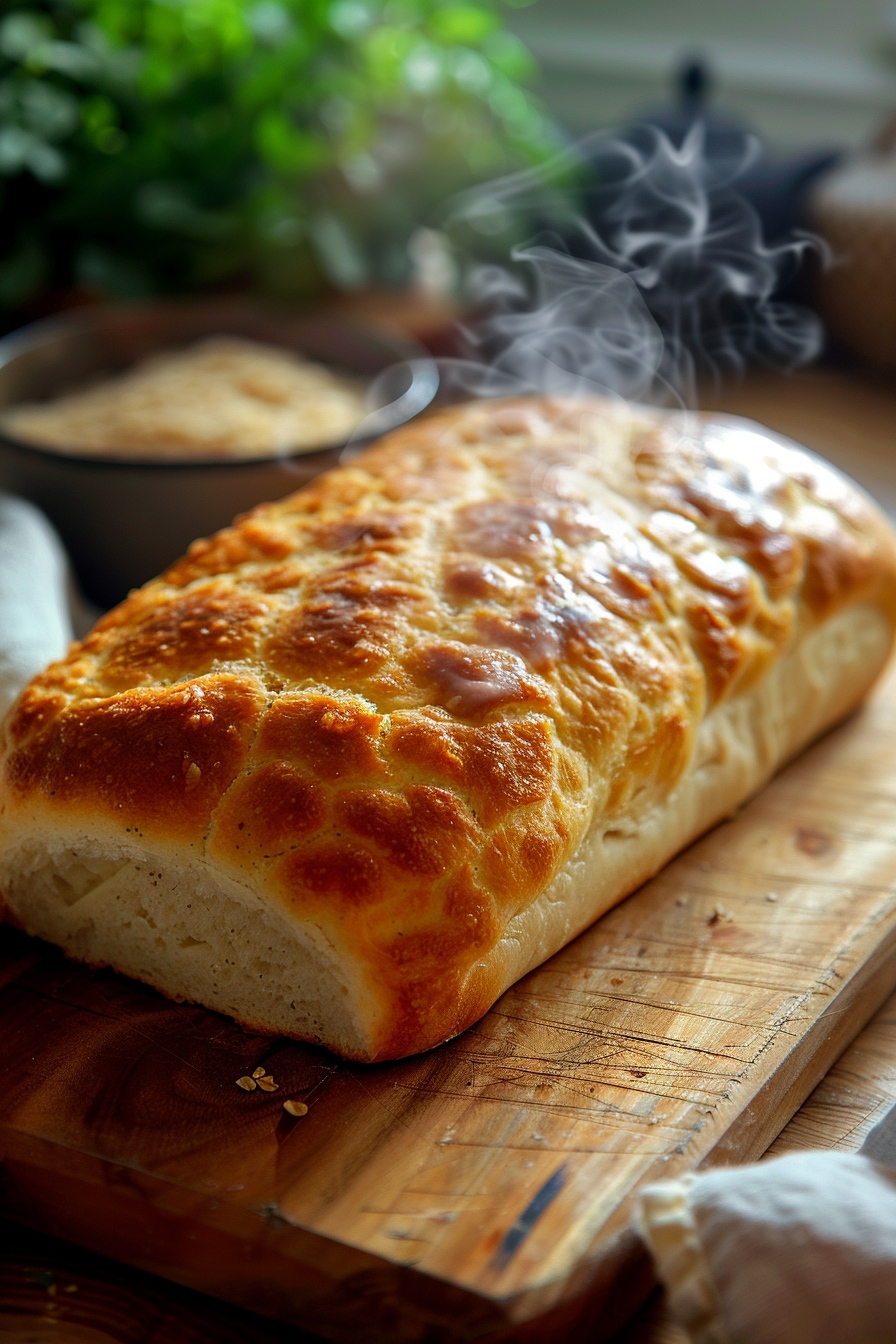
Why This Recipe Is Trending Among Home Bakers
In recent years, bakers have been looking for recipes that are both wholesome and easy to prepare. The cottage cheese bread recipe fits right into that demand. Not only does it provide a healthier option, but it also feels indulgent without being heavy. Social media foodies and nutrition enthusiasts alike are sharing their spins on this bread because it offers the best of both worlds: comfort food that supports a balanced diet.
Quick Peek: Ingredients and Flavor Profile
This bread keeps its ingredient list simple. You’ll need flour, eggs, yeast, salt, and, of course, creamy cottage cheese. Once baked, you’ll enjoy a golden crust with a soft, pillowy inside. The flavor is subtly tangy, slightly nutty, and pairs beautifully with spreads like butter, honey, or even savory toppings such as avocado and smoked salmon.
Looking for inspiration? Try this chicken broccoli and cheese casserole as another protein-packed comfort recipe.
Ingredients for Cottage Cheese Bread
The Star Role of Cottage Cheese in Bread Baking
The key ingredient in this cottage cheese bread recipe is, naturally, cottage cheese. Unlike cheddar or mozzarella, it doesn’t weigh the dough down. Instead, it melts gently into the mixture, giving the bread a light and creamy texture. It’s also a natural protein booster, making each slice more filling without feeling heavy.
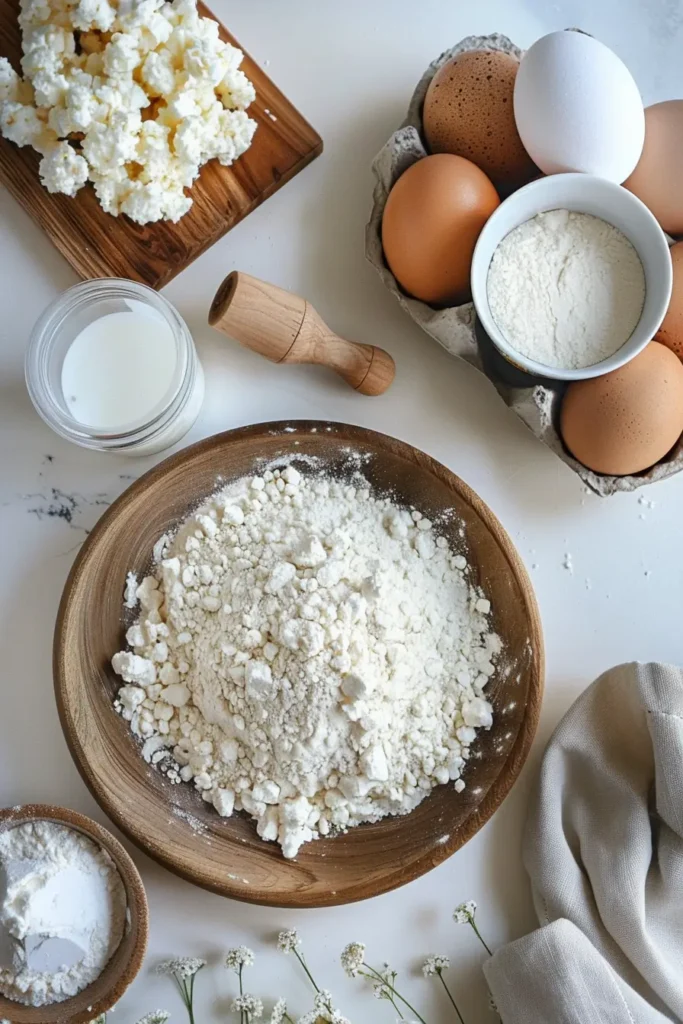
Essential Ingredients List
Here’s a quick overview of what you’ll need to make the perfect loaf:
| Ingredient | Purpose in Recipe | Substitution Options |
|---|---|---|
| Cottage cheese | Adds creaminess, protein, and moisture | Low-fat cottage cheese, ricotta |
| All-purpose/bread flour | Provides structure and chewy texture | Gluten-free flour blend |
| Yeast (instant or dry) | Helps the dough rise and become airy | Baking powder (for flatbread version) |
| Eggs | Binds ingredients and enriches the dough | Flaxseed meal + water (vegan option) |
| Salt | Enhances flavor and balances the richness | Sea salt or pink salt |
| Optional extras | Herbs, garlic, honey, or shredded cheese for taste | Omit or swap according to preference |
Substitutions and Dietary Alternatives
This cottage cheese bread recipe adapts easily for different diets. Gluten-free eaters can swap flour for a suitable blend, while vegans can replace eggs with a flax mixture. If you’d like a lighter loaf, go for reduced-fat cottage cheese. For a richer taste, sprinkle in parmesan or cheddar. No matter the tweaks, the end result is still a loaf that’s fluffy, wholesome, and versatile.
Check out our cabbage fat burning soup for another nutritious recipe idea.
Step-by-Step Instructions for Cottage Cheese Bread Recipe
Preparing the Dough with Cottage Cheese
Start your cottage cheese bread recipe by blending the cottage cheese until smooth. This step ensures there are no large curds that could disrupt the texture of the bread. In a mixing bowl, combine the blended cottage cheese, eggs, and a touch of honey or sugar if you prefer a slightly sweet loaf. Slowly add flour, yeast, and salt, mixing until the dough forms. The cottage cheese helps create a soft, moist dough that’s easier to handle than traditional bread mixtures.
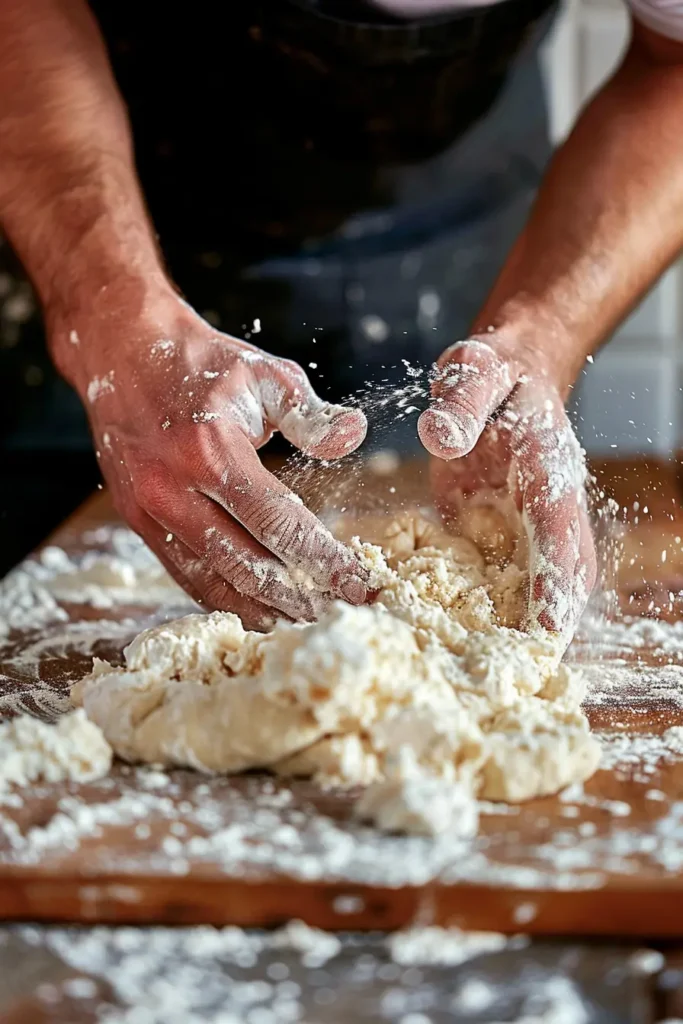
Kneading, Proofing, and Shaping
Once your dough comes together, knead it for about 8–10 minutes until it’s elastic and smooth. If the dough feels sticky, lightly dust it with flour. Place the dough in a greased bowl, cover it, and let it rise for one to two hours until it doubles in size. After proofing, punch it down, shape it into a loaf, and place it in a greased pan or on a baking sheet. This process ensures your cottage cheese bread recipe develops both flavor and structure.
Baking Temperatures and Timing
Preheat your oven to 375°F (190°C). Bake the bread for 30–35 minutes or until golden brown on top. A good trick is to tap the bottom of the loaf — if it sounds hollow, it’s done. Let it cool for at least 15 minutes before slicing to keep the texture intact.
Nutritional Value of Cottage Cheese Bread
Protein Content and Health Benefits
One of the biggest advantages of a cottage cheese bread recipe is its protein boost. Cottage cheese naturally adds high-quality protein to the loaf, making it more satisfying than traditional breads. This makes it a smart choice for those looking to stay full longer, support muscle recovery, or simply enjoy a more nourishing slice of bread.
Comparing Cottage Cheese Bread vs. Regular Bread
Regular bread is mostly carbohydrates, which provide quick energy but can leave you hungry soon after. By contrast, a cottage cheese bread recipe combines protein, carbs, and a bit of healthy fat. The protein slows digestion, giving you sustained energy and better appetite control.
Calories, Fats, and Carbohydrates Breakdown
Here’s a sample nutrition profile (per slice, based on one medium loaf with 12 slices):
| Nutrient | Cottage Cheese Bread | Regular White Bread |
|---|---|---|
| Calories | ~110 | ~90 |
| Protein | 6g | 2g |
| Carbohydrates | 15g | 18g |
| Fat | 3g | 1g |
| Fiber | 1g | 0.5g |
This balanced mix makes it not only a tasty option but also a healthier one compared to the typical loaf.
Variations of Cottage Cheese Bread Recipe
Gluten-Free Cottage Cheese Bread Option
For those avoiding gluten, the cottage cheese bread recipe can be easily adapted. Simply replace the all-purpose flour with a quality gluten-free flour blend. Because cottage cheese provides extra moisture and structure, the bread still turns out soft and flavorful. Adding an extra egg or flaxseed mixture can also help bind the dough and improve texture.
Savory Add-Ins: Herbs, Garlic, and Cheese Blends
This bread can be transformed into a savory treat by adding fresh or dried herbs. Rosemary, thyme, or parsley blend beautifully with the mild tang of cottage cheese. Garlic powder or roasted garlic cloves can give it a deeper, richer flavor. For cheese lovers, a small handful of cheddar or parmesan can be folded into the dough for a more indulgent loaf.
Sweet Variations: Honey, Cinnamon, and Fruit
The cottage cheese bread recipe can also lean sweet. Add a spoonful of honey or maple syrup to the dough for natural sweetness. Cinnamon and nutmeg bring a warm, comforting taste, while dried fruit like raisins or cranberries adds bursts of flavor in every slice. This recipe is perfect as a breakfast loaf or as a lighter dessert choice.
Tips & Tricks for the Perfect Cottage Cheese Bread
How to Prevent Dense or Dry Bread
A common issue when making a cottage cheese bread recipe is ending up with a dense loaf. To avoid this, make sure your yeast is fresh and properly activated. Knead the dough just enough to build gluten but not so much that it becomes tough. Adding the cottage cheese in a smooth, blended form also prevents dry pockets and keeps the texture consistent.
Achieving a Golden Crust with Cottage Cheese
If you love that golden, bakery-style crust, brush the top of your loaf with a little egg wash or melted butter before baking. The natural fats from the cottage cheese also help, but that extra layer gives your bread a glossy finish and deeper flavor.
Storing and Freezing Tips
Once baked, let your loaf cool fully before slicing to avoid squishing the crumb. Store it in an airtight bag at room temperature for up to three days. For longer storage, slice the loaf and freeze it. You can toast slices straight from the freezer without losing flavor or texture.
Serving Ideas for Cottage Cheese Bread
Breakfast Pairings: Spreads, Eggs, and Smoothies
Start your day with a slice of warm cottage cheese bread recipe topped with creamy butter, fruit jam, or honey. It also pairs beautifully with scrambled eggs or omelets for a protein-packed breakfast. Add a smoothie on the side, and you’ve got a balanced meal that keeps you energized.
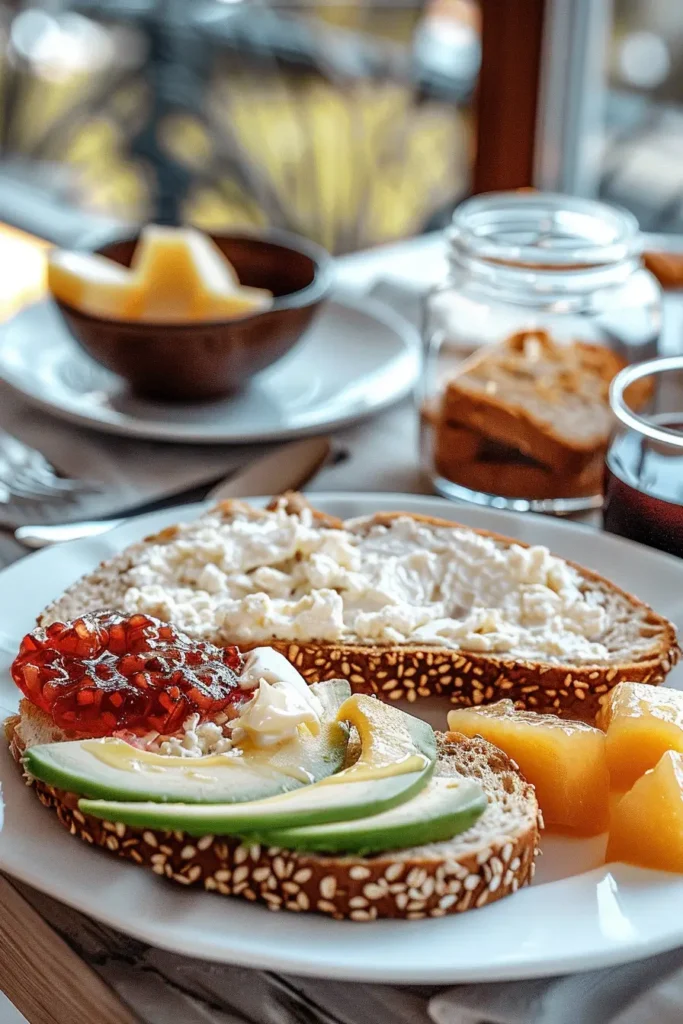
Lunch & Dinner Combos: Soups, Salads, and Sandwiches
This bread makes an excellent base for hearty sandwiches. Its soft yet sturdy texture holds up well to fillings like turkey, avocado, or grilled veggies. For a lighter option, serve it alongside soups such as tomato basil or chicken noodle. Pairing it with fresh salads creates a wholesome, balanced plate.
Creative Uses: Toasts, Bruschetta, and Dips
Don’t stop at the basics. Turn your loaf into crunchy toasts topped with avocado or bruschetta with tomato and basil. It also works wonderfully as a dipper for creamy hummus, spinach dip, or even olive oil with herbs. The mild tang of cottage cheese makes the bread versatile for both sweet and savory pairings.
Learn more about delicious pairings with our seared scallops with spicy Cajun cream sauce
Common Mistakes to Avoid in a Cottage Cheese Bread Recipe
Overmixing or Undermixing the Dough
When making a cottage cheese bread recipe, kneading is key. If you undermix the dough, your bread may turn out dense and uneven. On the other hand, overmixing can make it tough and chewy. The trick is to knead until the dough is elastic but still soft.
Incorrect Proofing Times
Proofing allows the bread to rise and develop a light, airy texture. Rushing this step can lead to a flat loaf, while letting it go too long can make the dough collapse. Aim for a first rise of about one to two hours, until the dough doubles in size, and a shorter second rise after shaping.
Using the Wrong Type of Cottage Cheese
Not all cottage cheese is created equal. If it’s too watery, it can throw off the dough’s balance, making it sticky and hard to shape. Blending or draining the cottage cheese before adding it ensures a smoother texture and consistent results every time.
Don’t miss our mirror glaze cake recipe for another fun baking challenge
FAQs About Cottage Cheese Bread
Is cottage cheese bread good?
Yes, a cottage cheese bread recipe is delicious. It’s moist, fluffy, and slightly tangy, making it more flavorful than standard bread.
Does cottage cheese melt in baking?
Cottage cheese doesn’t melt like mozzarella. Instead, it blends into the dough, adding creaminess and moisture to your bread.
Is baking with cottage cheese healthy?
Absolutely. Cottage cheese is rich in protein and calcium, which makes this bread a healthier option compared to regular loaves that are mostly carbs.
How is cottage bread different from regular bread?
A cottage cheese bread recipe includes cheese in the dough, giving it a softer texture and higher protein content. Regular bread usually relies only on flour, yeast, and water.
Find more delicious recipes on GrandyRecipes’ Pinterest, and stay inspired with the newest tips and ideas by following GrandyRecipes on Facebook.
